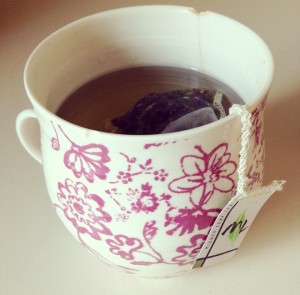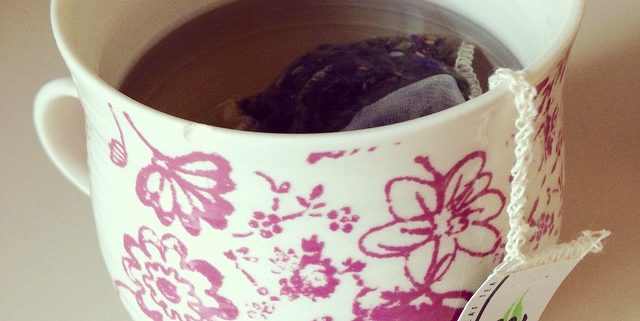More Tea Please
 With snow just around the corner, there is no better feeling than curling up by the fire with a warm cup of tea. That’s probably the reason why January is National Hot Tea Month. It’s only appropriate to celebrate the most popular beverage in the world. Nearly 3 billion cups of tea are consumed daily worldwide. And aside from tea’s mild and comforting flavor, it packs a number of health benefits that will likely convince you to add a little tea to your life.
With snow just around the corner, there is no better feeling than curling up by the fire with a warm cup of tea. That’s probably the reason why January is National Hot Tea Month. It’s only appropriate to celebrate the most popular beverage in the world. Nearly 3 billion cups of tea are consumed daily worldwide. And aside from tea’s mild and comforting flavor, it packs a number of health benefits that will likely convince you to add a little tea to your life.
There are thousands of different kinds of tea around the world. As more American millennials incorporate more tea into their lives than other generations, more studies reveal the positive health effects of this hot beverage. The three main teas you will find on the shelves are black, green and white tea. Each hold different properties and contribute to your health in different ways. However the main consensus about drinking any kind of tea is that it offers protection against diseases like cancer and heart disease and even helps boost your immune system as well as protect against the flu.
Traditional Black Tea
Most popular in Western Europe is traditional black tea. Black tea in fact is the most consumed tea in the world. This type of tea contains the highest caffeine content yet still falls short of coffee. In one cup of black tea there is 47 milligrams of caffeine, while black coffee contains around 95 milligrams.
Black tea is fermented. This means that the tea leaves have been oxidized in order to dry. This produces a strong, deep flavor which can then be steeped. Black tea is believed to reduce the risk of stroke and may protect the lungs against damage from oxidative stress. Many studies find that smokers benefit from black tea consumption daily.
In 2013, a Cochrane review concluded that black tea consumption over time will lower your blood concentration of bad cholesterol (LDL-cholesterol) by 7.74 mg/dL.1
Green Tea
Green tea is another popular variety of tea seen worldwide. The majority of green tea is consumed in China. Green tea is known for its high concentration of Epigallocatechin gallate (ECGC). ECEG, is an antioxidant that is believed to promote overall health benefits. However, there is no conclusive evidence of the effects of ECEG on your health. The FDA has yet to make any claims about ECEG.
Other antioxidants in green tea possess properties that may interfere with bladder, breast, stomach and colorectal cancers. Much like black tea, green tea also improves cholesterol levels, which may prevent the clogging of arteries.
Most notably, green tea can reduce the risk for neurological disorders like Alzheimer’s and Parkinson’s disease by limiting inflammation of vital tissue in the central nervous system.
White Tea
Another popular tea is white tea. White teas are a bit more vague since there is no general accepted definition of what a white tea actually is. What we do know about white tea is that it is uncured and unfermented like other teas. White teas gets its name from the fine silvery-white hairs on the unopened buds of the plant. It gives the leaves a whitish appearance.
These types of teas are smooth and have a milder flavor. They are mostly harvested in China. Interestingly, despite all of the information we have about green tea, it is believed that white tea has more potent antioxidant properties that are able to fight off cancer.
Adding white tea to your nightly routine won’t interfere with your circadian rhythm because it contains the least amount of caffeine and may actually induce a more pleasant night’s sleep.
Here are a few tips to take with you as you test out some of your favorite teas!
- When boiling the water for your tea, use cold fresh water from a water machine or bottle instead of warm tap water because warm tap water has less oxygen content than cold fresh water. It may also give off an unpleasant flavor.
- Make sure you use the correct measurements when brewing your tea. Unless directed otherwise, the typical recommendation is one bag or one teaspoon of loose tea per 8 ounces of water. This is important in making sure your tea isn’t too strong or too mild. Always be sure to check the label beforehand.
- Use the directions provided to see how long you must steep your tea. Allowing a tea bag to sit for too long may bring out a bitter or stringent taste in your mug.
Enjoy!
Your Turn to Take Action: Try out a tea you have never tried before. Find one that is your favorite and comment below!
1 Hartley L, Flowers N, Holmes J, Clarke A, Stranges S, Hooper L, Rees K (June 2013). “Green and black tea for the primary prevention of cardiovascular disease” (PDF). Cochrane Database Syst Rev (Systematic Review and Meta-Analysis)


Leave a Reply
Want to join the discussion?Feel free to contribute!